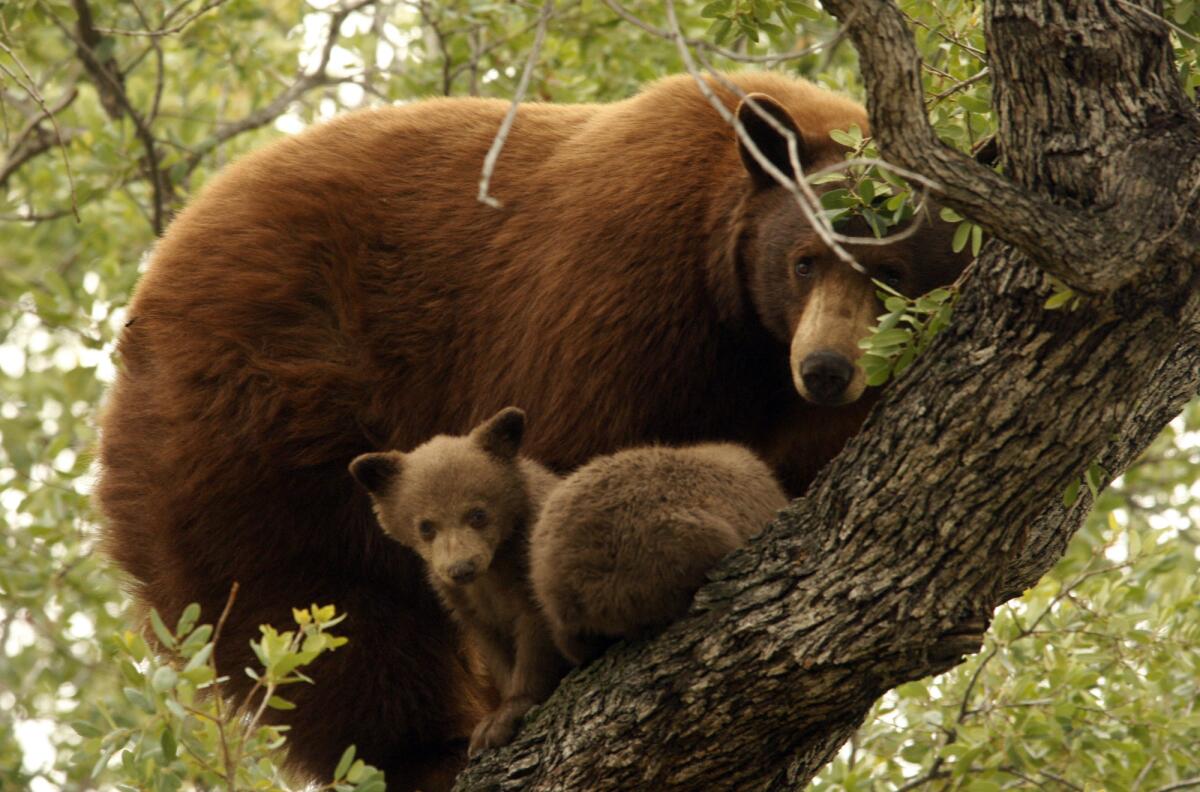New Mexico is the driest of the dry
As an extended drought bakes the West, nowhere are ravages of changes in the climate worse than in New Mexico.
- Share via
Scientists in the West have a particular way of walking a landscape and divining its secrets: They kick a toe into loamy soil or drag a boot heel across the desert's crust, leaning down to squint at the tiny excavation.
Try that maneuver in New Mexico these days and it yields nothing but bad news in a puff of dust.
Across the West, changes in the climate are taking a toll. Almost 87% of the region is in a drought.
Interactive: New Mexico's drought problem
Nevada is removing wild horses and stocks of cattle from federal rangelands, Wyoming is seeding clouds as part of a long-term "weather modification program," officials in Colorado say the state's southeastern plains are experiencing Dust Bowl conditions, and the entire western U.S. has been beset by more frequent and ferocious wildfires across an ever-more combustible landscape.
But nowhere is it worse than in New Mexico. In this parched state, the question is no longer how much worse it can get but whether it will ever get better — and, ominously, whether collapsing ecosystems can recover even if it does.
The statistics are sobering: All of New Mexico is officially in a drought, and three-quarters of it is categorized as severe or exceptional. Reservoir storage statewide is 17% of normal, lowest in the West. Residents of some towns subsist on trucked-in water, and others are drilling deep wells costing $100,000 or more to sink and still more to operate.
Wildlife managers are hauling water to elk herds in the mountains and blaming the drought for the unusually high number of deer and antelope killed on New Mexico's highways, surmising that the animals are taking greater risks to find water.
Thousands of Albuquerque's trees have died as homeowners under water restrictions can't afford to water them, and in the state's agricultural belt, low yields and crop failures are the norm. Livestock levels in many areas are about one-fifth of normal, and panicked ranchers face paying inflated prices for hay or moving or selling their herds.
The last three years have been the driest and warmest since record-keeping began here in 1895. Chuck Jones, a senior meteorologist with the National Weather Service in Albuquerque, said even the state's recent above-average monsoon rains "won't make a dent" in the drought; deficits will require several years of normal rainfall to erase, should normal rain ever arrive.

With water supplies at the breaking point and no relief in sight, a domino-effect water war has broken out, which might be a harbinger of the West's future. Texas has filed suit, arguing that groundwater pumping in New Mexico is reducing Texas' share of the Rio Grande. Oklahoma has successfully fended off a legal challenge from Texas over water from the Red River.
John Clayshulte's shadow is cast over drought-parched land where some of his pecan trees are planted near Las Cruces, N.M. He's had to remove his cattle from a federal grazing allotment. "This used to be shortgrass prairies," he says. "We've ruined it and it's never going to come back." More photos
New Mexico's stretch of the once-mighty Rio Grande is so dewatered that, sadly but aptly, it is referred to as the "Rio Sand."
The question many here are grappling with is whether the changes are a permanent result of climate change or part of cyclical weather cycle. Jones, a member of the governor's drought task force, is cautious about identifying three years of extreme drought as representing a new climate pattern for New Mexico. It could be a multi-year aberration.
Nonetheless, most long-term plans put together by cattle ranchers, farmers and land managers include the probability that the drought is here to stay.
John Clayshulte, a third-generation rancher and farmer near Las Cruces, removed all his cattle from his federal grazing allotment. "There's just not any sense putting cows on there. There's not enough for them to eat," he said.
"It's all changed. This used to be shortgrass prairies. We've ruined it and it's never going to come back."

Kris Havstad punched his boot into the sunbaked ground and grunted. Havstad, a range expert with the U.S. Department of Agriculture, joined a group of other biologists and land managers on a recent tour of government rangeland north of Las Cruces.
Federal scientists are grimly watching a rare ecological phenomenon unfold here, a catastrophic alteration known as "state change" — the collapse of the vast Chihuahuan Desert grasslands ecosystem and its transformation into a sandy, scrub desert affording little forage for wildlife or livestock.
A battered sign seems to sum up the mood in the driest parts of New Mexico, where many ranchers have had to remove their herds from federal grazing allotments. More photos
Carpeting the landscape in lush waves, Black Grama grass had long been the signature of the 140,000-square-mile Chihuahuan Desert. But overgrazing and persistent drought have hit hard here, reducing the grass to small, stiff tufts, sparsely spaced.
The 10,000-year-old desert is changing, scientists say. Grasses are in a cycle of collapse, overwhelmed by hardy and long-lived shrubs such as mesquite and creosote.
Havstad picks at a mesquite seed pod, noting that absent any grass, hungry livestock are consuming them. "They are not terribly nutritious," he said. "It's like being the last one at the buffet and the only thing left is snow peas."
With only shrubs available to eat, the land is losing its ability to feed the cattle that graze here. So little grass remains that a square mile — 640 acres — can sustain just three to five cows in current conditions. A healthy desert can handle five times as many.
This federal land and the adjacent Jornada Experimental Range offer a trove of data for climate study. The research station has kept monthly precipitation data since 1915, and the federal Bureau of Land Management has historical photographs of plots throughout the region that provide a time-lapse map of change.
In one spot, a photograph dating to the 1960s shows a lush grassy square. As the group of scientists flips through the pictures, over time the plot becomes stripped of vegetation. The photographs depict inexorable change.

Jim McCormick is the Bureau of Land Management's assistant district manager for the area. He said his staff had spent time and prodigious sums of money in a program to help the land recover from a century of harsh climate and cattle grazing.
"Then came the drought to undo all our work," he said.
The bureau oversees much of the region, which includes one of the largest public grazing areas in the country. The agency has asked ranchers to remove their cattle from a number of pastures for a year or two to allow the land to rest. In many cases, officials say, ranchers are taking their livestock off voluntarily.
The demise of native grasses during the drought, thought to be the worst since the 1950s, has been devastating to ranchers who have long relied on grazing to feed cattle. More photos
But not all the damage can be blamed on cattle; nor can simply removing them heal the landscape. An altered climate is now the biggest driver pushing the landscape-wide alterations taking place across the West.
"In the old days, we used to think if we built a fence around it, it will be OK," said Brandon Bestelmeyer, who conducts research on the Jornada for the Department of Agriculture. "That thinking didn't take into account climate change. These kind of state changes are catastrophic changes. They can be irreversible."
As vegetation dies off and the process of desertification accelerates, Bestelmeyer said, the Chihuahuan Desert will expand. As Western cities continue their march into wildlands, the growing desert and the sprawling suburbs are on a collision course.
Bestelmeyer, a landscape ecologist, describes what's at stake: "If we lose the grasslands, grazing is over, and the generations of people who depend on grazing will lose their livelihoods."
Biodiversity will decline as wildlife and bird species move away or die off. Moreover, a denuded landscape loses its ability to transport water to recharge aquifers, a crucial resource in the desert.
Finally, he said, without vegetation to hold soils in place, dust and sand will be on the move and encroach onto roads, crops, homes and businesses.
"You don't want a Sahara here," Bestelmeyer said.
Follow Julie Cart (@julie_cart) on Twitter
Follow @latgreatreads (@latgreatreads) on Twitter
More great reads
Bad news bears might have mischief in their DNA

When you have so many bears and so many people, you’re going to have conflicts erupting.”
Sign up for Essential California
The most important California stories and recommendations in your inbox every morning.
You may occasionally receive promotional content from the Los Angeles Times.









